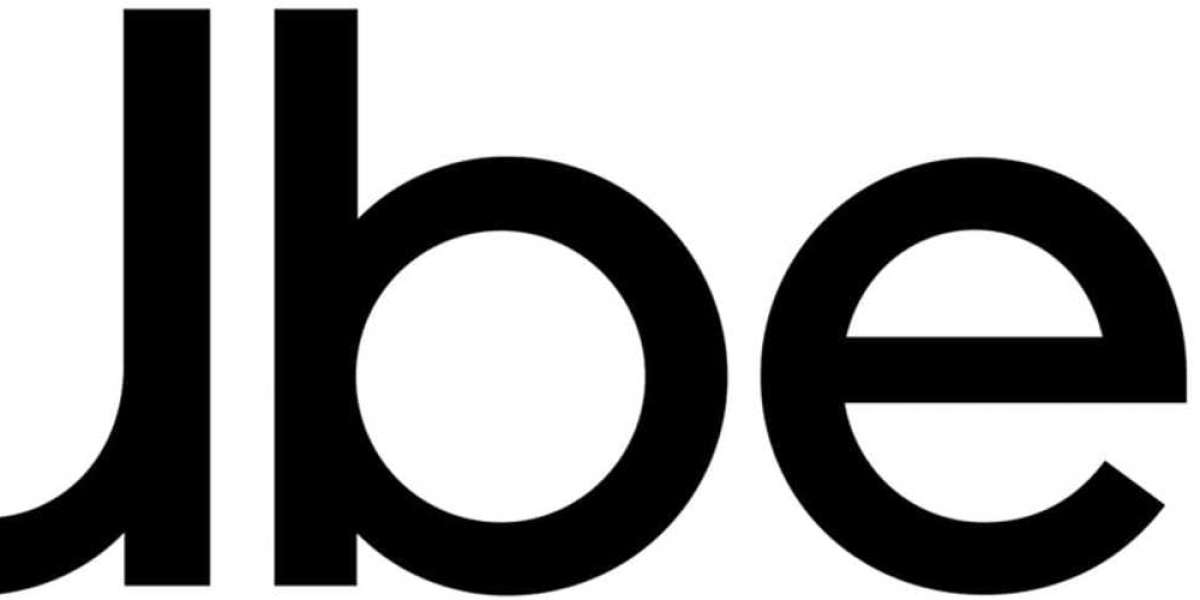Credential Recycling Crisis
Cybercriminals have weaponized recycled passwords, turning digital convenience into a global security crisis.
Unlike targeted hacking methods, these assaults exploit human habits—reusing login details across platforms—to hijack accounts silently.
Imagine a thief testing stolen house keys across every door in a neighborhood.
That’s how automated bots barrage websites with millions of leaked username-password pairs daily.
Even a 0.1% success rate can yield thousands of compromised accounts from a single attack wave.
Recent breaches reveal staggering numbers: 773 million emails exposed in Collection #1, followed by 2.2 billion more in subsequent leaks.
Cyberdefense firm Akamai detected 115 million daily login attempts in 2018, peaking at 250 million during intense campaigns.
For businesses, this translates to $5 billion annual losses from fraud and recovery efforts.
Why does this low-success approach thrive?
Distributed login attempts mimic legitimate traffic, evading standard security alarms.
Brute-force attacks target single accounts with repeated guesses, easily spotted and blocked.
Credential stuffing spreads risk across thousands of users, slipping under detection radars.
The underground economy fuels this menace.
Freshly stolen bank credentials fetch up to $190 each, while expired streaming accounts sell for pennies.
Dark web markets even offer “verified” credentials with replacement guarantees—a twisted mirror of legitimate e-commerce.
Weak password storage practices amplify the problem.
Companies using outdated encryption or storing passwords in plaintext become unwitting accomplices.
Once breached, these poorly protected databases flood hacker forums within hours.
Defense requires multilayered strategies.
Multi-factor authentication blocks 99.9% of automated attacks, while password managers eliminate reuse temptation.
AI-driven systems now analyze login patterns, flagging unusual spikes in failed attempts across multiple accounts.
Time remains the critical factor.
Half of credential thefts are detected within four months, but some linger undetected for years.
Every day undetected means more accounts hijacked, more data plundered, more lives disrupted.
The solution lies in breaking the cycle.
As biometric authentication and passwordless logins gain traction, the era of memorized secrets may finally sunset.
Until then, vigilance—and unique passwords—remain our best shields against this invisible invasion.
Behind the scenes of modern cyberattacks, stolen login pairs fuel a shadowy economy.
High-profile breaches reveal the scale:
In 2023, Jason’s Deli saw 340,000 loyalty accounts compromised via reused passwords, leaking partial payment data.
That same year, 23andMe’s familial DNA feature allowed hackers to pivot from 14,000 breached accounts to harvest ancestry details from 6.9 million profiles.
Meanwhile, Superdrug’s 2018 extortion attempt exposed how attackers often repurpose credentials from unrelated breaches to bypass detection.
Monetization paths diverge:
Cybercriminals either flip verified accounts on dark web markets for quick profit or exploit them directly—draining funds, impersonating users, or penetrating corporate networks.
An eBay account fetching $10 might enable thousands in fraudulent purchases, while medical data becomes fodder for insurance scams.
Automation drives these campaigns:
Off-the-shelf tools like Sentry MBA or Black Bullet ($5-$50) handle CAPTCHA evasion and traffic distribution, while subscription-based "checker" platforms test credential lists against major sites for pennies per hit.
Sophisticated actors craft custom scripts to bypass evolving defenses, prioritizing stealth over convenience.
Infrastructure matters:
Attackers mask their tracks using hijacked IoT devices or rented botnets ($50/day) instead of traceable commercial proxies.
These zombie networks mimic organic traffic, circumventing IP-based blocks during mass login attempts.
The cycle continues:
As security tools flag older methods, premium underground markets sell cutting-edge software before it becomes mainstream.
Each innovation prolongs the viability of stolen credentials until defenses adapt—a perpetual arms race in the digital shadows.
Cyber intruders increasingly exploit recycled login details
to infiltrate corporate systems through automated attacks
Financial institutions and tech giants alike face relentless assaults
HSBC's 2018 breach exposed sensitive client data globally
Hackers leveraged reused credentials from unrelated platforms
Compromised employee accounts became gateways to financial records
Video platforms like Dailymotion implemented forced logouts
GDPR compliance triggered mandatory breach notifications
User password resets became standard damage control protocol
Food delivery services battle perception issues amidst attacks
Third-party credential leaks often misattributed to platform flaws
Companies face scrutiny despite lacking control over password reuse
Tax preparation services became high-value targets in 2019
Stolen financial data risks enabled identity theft schemes
Providers offered complimentary credit monitoring defensively
Collaboration tools witnessed credential validation assaults
Brute-force login surges prompted IP blocks and CAPTCHA walls
Proactive password resets limited potential account hijackings
Platforms increasingly automate suspicious activity detection
Preemptive lockouts occur before confirmed breaches
Security teams prioritize rapid response over forensic certainty
Multi-factor authentication proves ineffective against determined attackers
Stolen session cookies sometimes bypass secondary verification
Cybersecurity measures constantly evolve against adaptive threats
Legal frameworks struggle to assign liability in stuffing cases
Regulators balance corporate responsibility with user accountability
GDPR enforcement tests boundaries of preventable security failures
The perpetual arms race between hackers and defenders escalates
Credential recycling remains weakest link in digital security chains
Collective vigilance becomes essential in interconnected ecosystems
Credential Stuffing Threats
Credential stuffing attacks have become a growing concern in cybersecurity, with several high-profile incidents making headlines in recent years. One notable case involved Dunkin' Donuts, which experienced two separate attacks within just three months during late 2018 and early 2019.
Despite affecting only about 1,200 of Dunkin's 10 million users, these breaches demonstrated how even seemingly low-value accounts can become targets. Surprisingly, compromised Dunkin' accounts were being sold in underground markets, where criminals could exploit personal information or manipulate the company's reward program for financial gain.
The danger of credential stuffing extends beyond coffee rewards. For individuals, these attacks can lead to identity theft, unauthorized purchases, and financial losses. Organizations face dual threats: potential system infiltration and reputational damage, even when the root cause lies with users reusing passwords across multiple sites.
Protecting yourself requires several key strategies. First and foremost, use unique passwords for every account. Password managers like Dashlane can generate and store strong credentials, eliminating the need to remember dozens of complex passwords. If you've been using similar passwords across multiple sites, consider it only a matter of time before you're compromised.
Staying informed about data breaches is equally important. Resources like "Have I Been Pwned" allow you to check if your information has appeared in known breaches and can alert you to future incidents. If your data has been exposed, change affected passwords immediately.
Two-factor authentication provides another crucial layer of defense. While not infallible, it significantly increases the difficulty of account takeovers, often causing attackers to move on to easier targets. Options range from authentication apps to physical security tokens, with SMS verification being a less secure but still helpful alternative.
For organizations, employee education is essential. Staff must understand both the "how" and "why" of password security. Simply instructing employees to use strong passwords without explaining the risks of reuse rarely works. Companies should provide training on password managers and implement the principle of least privilege, ensuring employees only have access to necessary systems.
Businesses must also implement monitoring systems to detect unusual login patterns and deploy CAPTCHA to deter automated attacks. Even when credential stuffing isn't technically their fault, companies bear responsibility for protecting customers and managing these incidents with care.
As data breaches continue and billions of credentials remain exposed online, credential stuffing will remain a significant threat. However, by implementing these protective measures, both individuals and organizations can substantially reduce their vulnerability to these increasingly common attacks.When an organization identifies unauthorized access, it is crucial to immediately lock the affected accounts and prompt a password reset. Clear and simple communication with the impacted users is essential to prevent misunderstandings. If the situation is not explained well, users might assume that the company experienced a data breach or failed to secure their accounts properly.
Small-scale credential stuffing attacks can be particularly challenging to detect because they do not usually cause noticeable spikes in account activity. Even with effective monitoring, if an organization fails to prevent such an attack, it must handle the situation with care. Customers may easily misinterpret the event and blame the company, even if the issue was due to their own password reuse.
To maintain a positive public image, offering free credit monitoring and identity theft protection to affected users can be beneficial, as demonstrated by TurboTax. Failing to do so can result in negative publicity, similar to what Deliveroo faced.
Organizations are also at risk of data breaches, which can lead to credential stuffing attacks. To protect both their own interests and global security, companies should adhere to best security practices to minimize the likelihood of a major breach.
In addition to the security measures already discussed, organizations should:
- Hash and salt passwords appropriately : Storing passwords in plaintext is highly insecure. Instead, store only the hashed and salted versions of passwords to prevent unauthorized access and limit the impact of a data breach. Adding a salt (a random number) before hashing helps protect against rainbow table attacks. Properly implementing these practices can significantly reduce the costs and consequences of a data breach.
- Train employees : Employees often represent a weak link in organizational cybersecurity. Comprehensive training, especially in anti-phishing, can help mitigate the risks introduced by human error or lack of knowledge.
- Update software promptly : Regular updates are crucial for patching vulnerabilities. Enabling auto-updates ensures that the latest security patches are installed without delay, reducing the risk of exploitation by hackers.
If a breach is detected, swift and careful action is necessary. The first step is to contain the breach, followed by a thorough analysis to understand the extent of the damage and the affected parties. Depending on the circumstances, the organization may be required to report the breach. Delaying notification can result in legal penalties, as seen in the case of Uber.
Covering up a breach is counterproductive and gives attackers more time to exploit the compromised credentials. To protect users, the organization should notify them as soon as possible and advise them to change their passwords. Offering credit monitoring and identity theft protection can also help mitigate the impact.
Additionally, educating users about the dangers of credential stuffing is important. This way, they can take proactive steps to change passwords on other accounts that may have been compromised.
By taking credential stuffing seriously, both breached users and businesses under attack can help minimize the threat and reduce the significant financial losses it causes each year.
What is a Netflix VPN and How to Get One
A Netflix VPN is a specialized virtual private network service that enables viewers to bypass geographical restrictions on Netflix's streaming library. By routing internet traffic through servers in different countries, users can access shows and movies that might otherwise be unavailable in their region, essentially unlocking Netflix's full global content catalog rather than being limited to what's offered in their local version.
Why Choose SafeShell as Your Netflix VPN?
If you're tired of experiencing Netflix vpn not working issues and want to access region-restricted content seamlessly, SafeShell VPN might be the perfect solution for your streaming needs. This powerful VPN service offers a range of benefits designed specifically to enhance your Netflix viewing experience, ensuring you can enjoy your favorite shows and movies without frustrating interruptions or limitations.
SafeShell VPN stands out from competitors with its high-speed servers optimized for Netflix streaming, allowing for buffer-free playback in high definition. The exclusive App Mode feature is particularly impressive, enabling users to access content from multiple regional libraries simultaneously—something many other VPNs cannot offer. Additionally, you can connect up to five devices at once across various platforms including Windows, macOS, iOS, Android, and even Apple Vision Pro, making it incredibly versatile for all your viewing devices.
Beyond streaming capabilities, SafeShell VPN prioritizes user security with its proprietary "ShellGuard" protocol that protects your private browsing sessions with top-level encryption. When Netflix VPN not working problems plague other services, SafeShell VPN maintains reliable connections with no bandwidth limitations, ensuring consistent access to global content. The flexible free trial plan allows you to experience all these benefits before committing, making SafeShell VPN a risk-free choice for enhancing your streaming experience.
A Step-by-Step Guide to Watch Netflix with SafeShell VPN
Unlocking global Netflix content has never been easier with SafeShell Netflix VPN . Here's how to access your favorite shows from anywhere:
- Download the SafeShell VPN application from their official website and install it on your preferred device
- Launch the application and log into your SafeShell account
- Select APP mode for optimal streaming performance
- Browse through the server list and connect to a location matching your desired Netflix region
- Once connected, open your Netflix app or website and sign in to your account
- Start streaming content exclusive to your chosen region without any geographical restrictions








